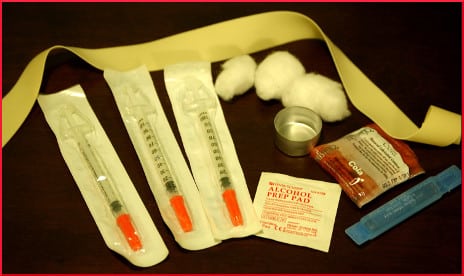People who get hooked on nicotine, alcohol, and street drugs all have something in common: they are also likely to be addicted to food. As food addiction expert Phil Werdell says:
They often come to Overeaters Anonymous or one of the other food–related 12 Step fellowships because they find themselves reacting to food just like they had reacted to alcohol or their drug of choice many years before…
This is how we know food addiction exists. The conviction is not based on overheard cute remarks, made by ladies who lunch, about irresistible chocolate mousse. No. Legitimate, bona fide recovering addicts from other genres have identified food addiction as a reality, and they should know. Werdell says, “Often they will identify sugar, flour or fat as a substance that is acting in their bodies like a narcotic.”
But in the context of more exigently life-threatening drug and alcohol habits, the specter of food addiction has traditionally taken a back seat. The Alcoholics Anonymous (AA) guidebook recommends using candy to help fight the drinking urge. Sure, weighing 300 pounds is not a desirable state, but when compared to crawling inebriated through a gutter, it is considered the lesser of two evils.
The Other Addictors
Ex-smokers are notorious for gaining weight. Once the cigarettes are gone, many people find that the fingers and the oral cavity need something to do — in many cases, the solution is to eat. The hands and the mouth are habituated to engaging in activity, which is hard enough to deal with, but there is more to it than that.
Werdell brings up the fact that tobacco is often cured with sugar. Perhaps through the cigarettes, the reformed smoker was getting enough sugar to sustain that habit, as well as the jones for nicotine. Sadly, the absence of cigarettes leaves behind not only a behavioral addiction centered around mouth pleasure and manual occupation, but a lonely, orphaned sugar addiction that now needs another feeding source.
The All-or-Nothing Dilemma
The big, unavoidable hitch for recovering food addicts, even if they successfully beat alcohol with AA or another 12-step program, is that food doesn’t fit the paradigm that allows for abstention. You can decide not to drink liquor, but you can’t decide not to eat food — not without bringing on a whole raft of new, different, and potentially lethal problems. The author writes:
It is difficult to move from the “all or nothing” model of no alcohol to a structured eating plan… It is not possible to just “not be around food” the way it is possible to avoid alcohol or smoking.
Plus, ex-drinkers face the same deprivation as ex-smokers. However much sugar was being supplied by their liquor of choice, that chemical is now missing from their diet. In fact, Werdell seems to almost suggest that alcoholism is just a variety of food addiction, albeit more blatantly intoxicating and obviously psychoactive.
What is alcohol but grain and a form of sugar? The most common addictive foods are sugar and flour. A majority of these sober alcoholic food addicts can quickly remember using and abusing food years before they picked up alcohol… When raw emotions came up in early alcohol recovery, one could still use food to cope.
For hard drugs, the case is similar:
Foods can break down in the digestive symptom into bio-chemical compounds that are similar to the opioids in narcotics. The dosage and effect of using morphine, heroin or cocaine is much stronger, but once these are out of their blood, some physically sober drug addicts can get high and chemically addicted just by using more and more food.
Detoxification from food can be worse than getting over the other substances. Food issues bring a person all the way back to the beginning, to the breast and the bottle and the sugar-saturated formula, and the attention or the lack thereof, and the basic equation of nourishment with love that keeps millions of people enslaved to substances.
What’s It to Us?
Now, what does this have to do with childhood obesity? Very few children use nicotine, alcohol, or street drugs. They do not typically sign in to a program with other addictions, or with a history of either failure or success in beating those life-threatening habits. So, why are we even thinking about this stuff?
Because we don’t want our kids who are rescued from food addiction to be vulnerable to other addictogens. We want them treated and helped and healed in such a way that NO other substances or behaviors can swoop into the emptiness and opportunistically colonize that void. We want treatment that proofs them against the alluring false promises of any substances or habits – with no empty spaces left to fill.
Your responses and feedback are welcome!
Source: “Cross Addictions,” FoodAddiction.com, 05/02/13
Image by Todd Huffman


 FAQs and Media Requests:
FAQs and Media Requests: 












One Response